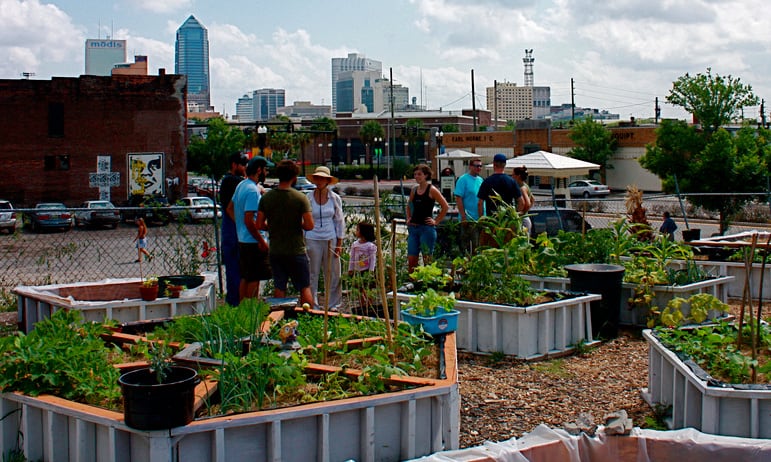City Blooming Fundamentals Explained
City Blooming Fundamentals Explained
Blog Article
The smart Trick of City Blooming That Nobody is Talking About
Table of ContentsThe Single Strategy To Use For City BloomingThe Main Principles Of City Blooming The Greatest Guide To City BloomingCity Blooming Fundamentals ExplainedThe City Blooming PDFs
Intrigued in growing food available in the City of Chicago? Thinking of starting a neighborhood garden? Adjustments to the Chicago Zoning Statute enable agricultural usages like community yards and urban ranches in many parts of the city. Below is a listing of often asked questions regarding the guidelines and laws that cultivators must think about when intending an urban agriculture job.
The zoning modification does not customize any type of various other codes dealing with composting, structure licenses, purchasing or renting City had residential property, company licenses or ecological contamination. There are existing codes that control these concerns and they stay completely impact and might apply to your job. Neighborhood yards are usually had or taken care of by public entities, public companies or community-based companies and preserved by volunteers.
Urban farms expand food that is planned to be offered, either on a nonprofit or for-profit basis. Due to their commercial objective, city farms need a service permit.
A Biased View of City Blooming
The amount of garden compost material can not go beyond 25 cubic yards at any kind of given time according to the standards in 7-28-715 of the City's Municipal Code. Since the dirt at most new garden sites needs modifying, compost, soil, wood chips, or various other products can be gotten to construct or boost the expanding area.

If a structure authorization is needed then the hoophouse will certainly be considered an accessory structure. You can figure out more regarding the structure license requirements by speaking to the Department of Buildings. The 25,000-square-foot size restriction is intended to stop a solitary neighborhood garden from dominating a provided block or interfering with the block's existing domestic or industrial character.
The limit does not relate to yards found in Public Open Space (POS) districts. Can there be even more than one neighborhood garden that is 25,000 square feet on a solitary block? Yes. The dimension limitation relates to private yards, not to private blocks. No. Fence is not required, nonetheless, yards that have large parking lot may be called for to mount secure fencing or various other landscape design attributes.
Examine This Report about City Blooming
B1 & B2 areas need that all commercial usage tasks be conducted indoors. Is fencing needed for metropolitan farms? Fencings might be needed, along with landscaping and screening, for particular parking locations and exterior job or storage areas depending on area and the certain activity taking area.
Yes. Urban farms call for structure authorizations and zoning authorizations before construction. Various other types of city review might be required depending on specific structures, activities, dimension, landscaping, licensing, public health and stormwater monitoring problems. Most of these requirements are identified in the task layout or permitting process, nevertheless, the candidate might be responsible to individually determine particular licenses or permits that may be required.
Yes. The sort of license is determined by what is taking place at the site. The Department of Service Affairs and Consumer Defense can aid identify the particular sort of business permit that's called for. Yes. Off street car parking is required for the majority of commercial jobs in Chicago. The needed number of garage is based on the variety of employees servicing website and not the square footage of the growing area.
The Of City Blooming

A metropolitan farm can offer compost material generated on site, however, the operation must comply with the policies in 7-28-715 of the Chicago Municipal Code. Aquaponic systems This Site are allowed indoors on urban farms in numerous zoning areas.
Up to 5 hives or nests of honey may be maintained as an accessory usage. Nonetheless, beekeepers must sign up with the Illinois Division of Farming. To learn more regarding the proposed zoning modification you might call the Department of Housing and Economic Growth, Bureau of Preparation and Zoning at 312.744.8563.
, which takes area in rural areas at the edge of suburban areas.
Some Known Incorrect Statements About City Blooming
It can entail a movement of organic growers, "foodies" and "locavores", who seek to create social networks established on a common principles of nature and community holism. These networks can create by way of formal institutional support, ending up being incorporated into regional town planning as a "transition community" motion for lasting city development.
Some of the first proof of urban farming comes from Mesopotamia.
Report this page